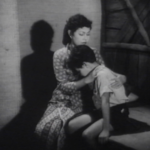As Far As We Could Get
2019
22:46 minutes
Iván Argote
Iván Argote’s As Far As We Could Get comprises a series of video chapters made in the municipality of Palembang, Indonesia and the small town of Neiva, Colombia. The two cities are exact antipodes. The geographical usage of the term antipode – designating points diametrically opposite one another on the globe – stems from the ancient belief that the other side of the earth held a kind of netherworld, where everything was inverted, causing the men who lived there to walk backwards. Ivan Argote tests this theory, surveying a pair of modern-day antipodes for his 22-minute video. Urban antipodes are rare, with only a handful of possible case studies. While physically the farthest points from one another on the globe, the two cities share a status as former colonies and occupy positions similarly peripheral to the flows of global capital and culture. The film tracks other commonalities through seven chapters, applying Borgesian taxonomies to catalogue anachronistic monuments or attitudes toward public displays of affection.
Iván Argote explores the relationship between history, politics and the construction of our own subjectivity. His films, sculptures, collages, and public space installations attempt to generate questions about how we relate to others, to the state, to patrimony and traditions. His works are critiques, sometimes anti-establishment, and deal with the idea of bringing affect into politics.
Colors:
Related works sharing similar palette
» see more

© » KADIST
Tanatchai Bandasak
2019Central Region by Tanatchai Bandasak is a meditation on materiality and time-based media centres on the mysterious, prehistoric ‘standing stones’ of Hintang in Northern Laos: little-studied megaliths which have survived thousands of years of political change and the cataclysmic carpet-bombing of Laos by the United States during the Cold War...

© » KADIST
Karan Shrestha
2017After the decade-long conflict (1996-2006) that ended with Nepal becoming a Federal Democratic Republic, political unrest and weak governance continued to mark the country’s future as daily life repeatedly witnessed ruptures...

© » ARTS EQUATOR
Celebrating the monstrous other: "Anak Pontianak" and "Nobody" at LumiNation | ArtsEquator Thinking and Talking about Arts and Culture in Southeast Asia Articles Courtesy of The Filmic Eye August 5, 2019 By ila (1,100 words, 6-minute read) The year is 2049: two hundred years since the Pontianak first appeared in writing, marked insignificantly in Hikayat Abdullah as residues of superstitious and foolish beliefs of the Chinese and Malays that have persisted with time...
Related works found in the same semantic group
» see more

© » KADIST
Kori Newkirk
2013LAB (2013) conjures the body as the trace of a sooty hand appears, spectrally, on a crumpled paper towel...

© » KADIST
Elena Damiani
2014In Fading Fields 7 by Elena Damiani, the unstable transparency of the print on silk chiffon is relative to the light and the viewer’s position, varying continually as one moves around the work...



